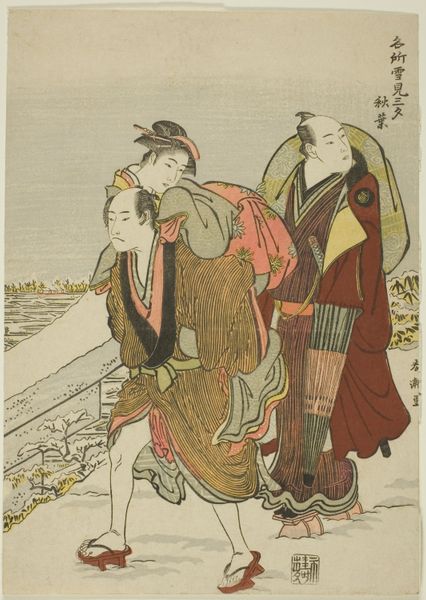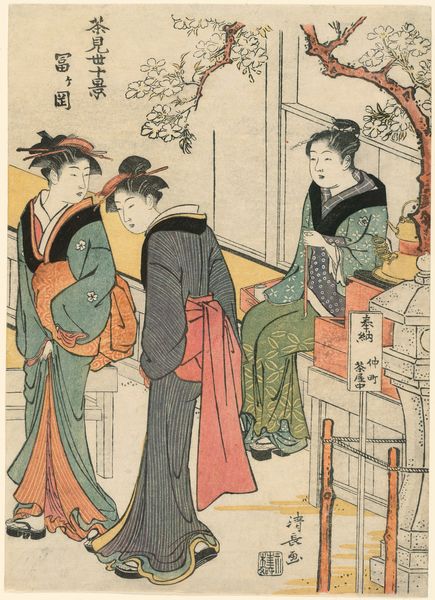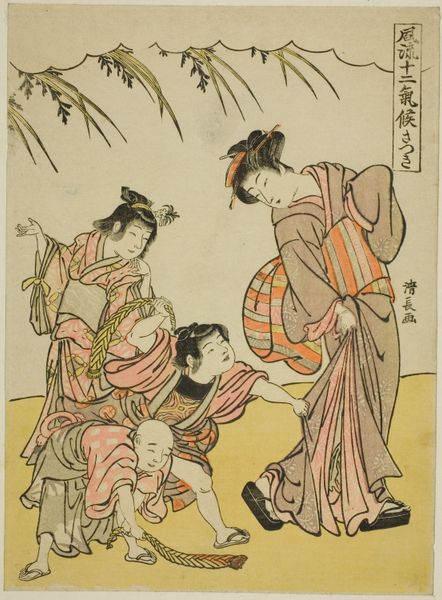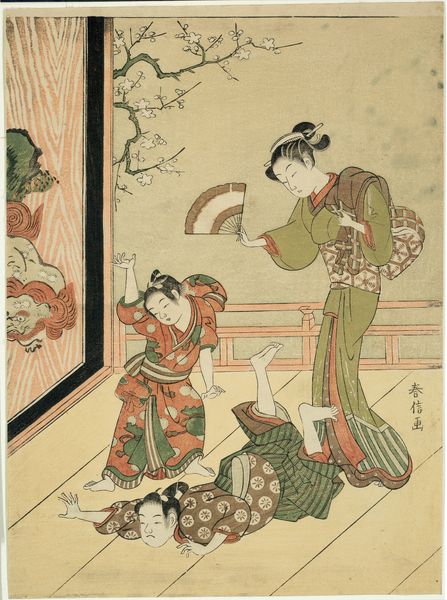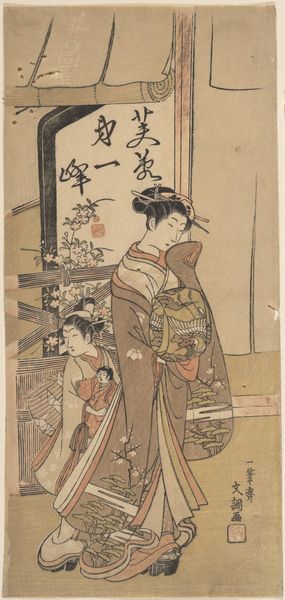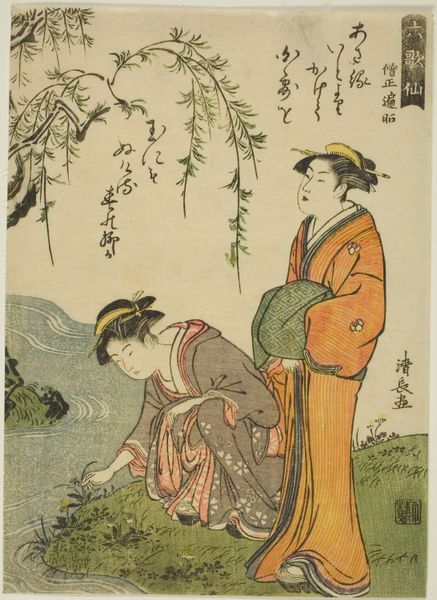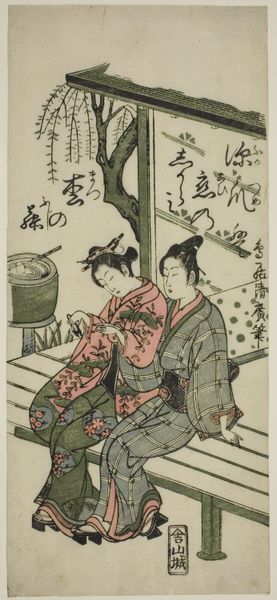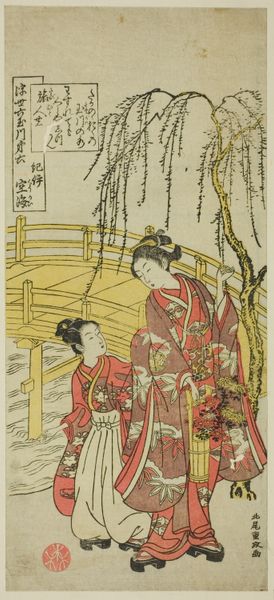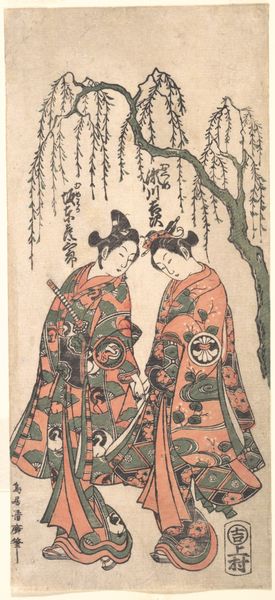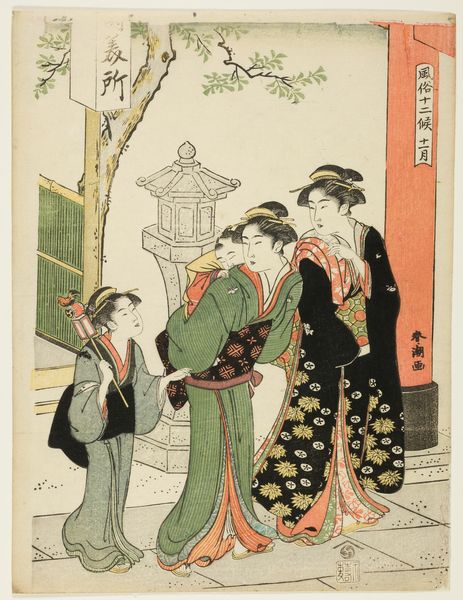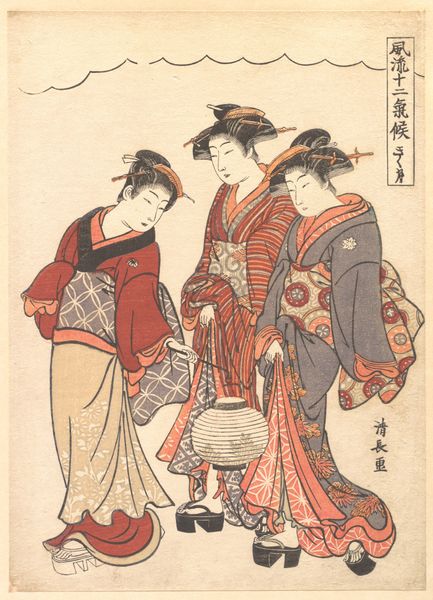
The First Month (Mutsuki), from the series "Fashionable Twelve Seasons (Furyu juni kiko)" c. 1779
0:00
0:00
print, woodblock-print
#
portrait
# print
#
asian-art
#
ukiyo-e
#
woodblock-print
#
genre-painting
Dimensions: 26.1 × 19.2 cm
Copyright: Public Domain
Editor: This vibrant woodblock print, titled "The First Month," created around 1779 by Torii Kiyonaga, has such a gentle feel. I’m curious about the textures and how they were achieved with woodblocks. What's your perspective on this work, particularly regarding its creation? Curator: Look closely at the well's construction. Its rough, bound wood contrasts sharply with the smooth kimonos of the figures. What does this tell us about the intended audience and the social values embedded in this print's production and consumption? The artist meticulously carved blocks to represent different colors and textures, catering to a market that appreciated detailed depictions of everyday life and seasonal activities. Editor: So, the well isn't just a well, but also an element that connects social status to daily activities. Curator: Precisely. This connects to the entire ukiyo-e tradition. Mass production using woodblocks allowed for wider accessibility, impacting art consumption among different social strata. The elegant figures engaging in the mundane act of drawing water suggests a commentary on labor, leisure, and class distinctions. Consider the materiality of the print itself—paper, ink, wood—and how its circulation contributed to the popularization of certain lifestyles and ideals. How do these observations resonate with contemporary issues of art and consumerism? Editor: That’s interesting. I see now how the very act of making and distributing this print reveals so much about the society it was part of. It makes me think about art's accessibility and role in reflecting—or even shaping—cultural values, even today. Curator: Exactly! Considering the process of creation provides insightful perspectives on art's social function throughout history. The tangible aspects—the materials, the labor, the audience—connects art to the everyday realities of its time. Editor: Thank you; looking at it through this lens has given me a whole new perspective. I now see how important it is to understand how the art object came into being to fully understand the cultural narratives it conveys.
Comments
No comments
Be the first to comment and join the conversation on the ultimate creative platform.

